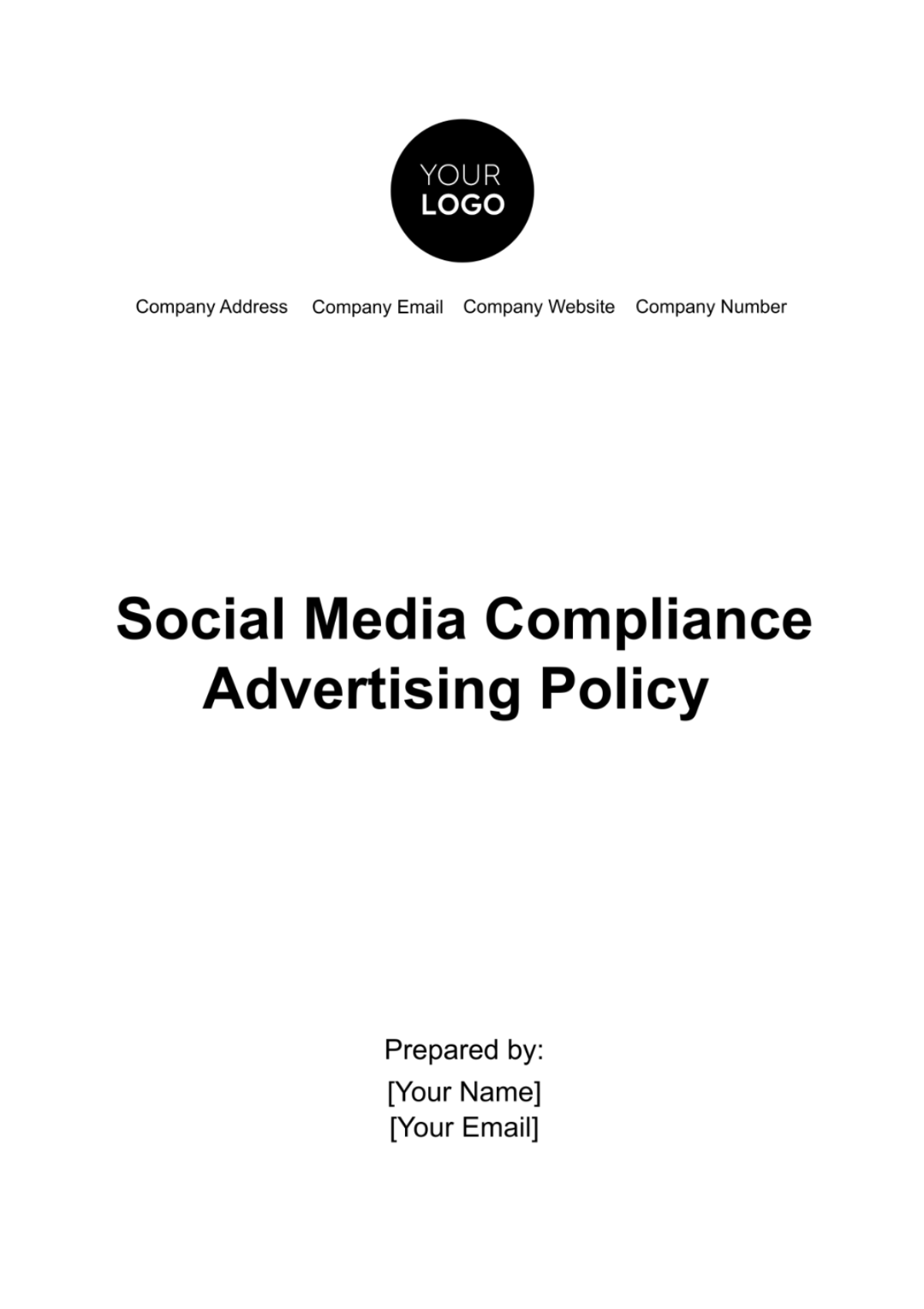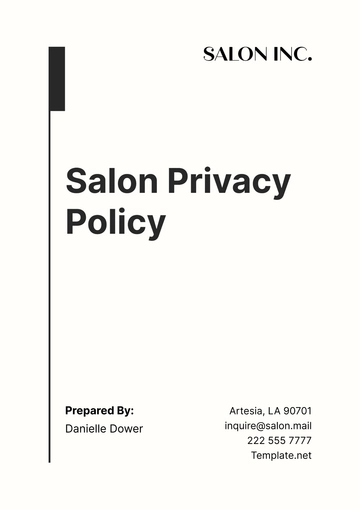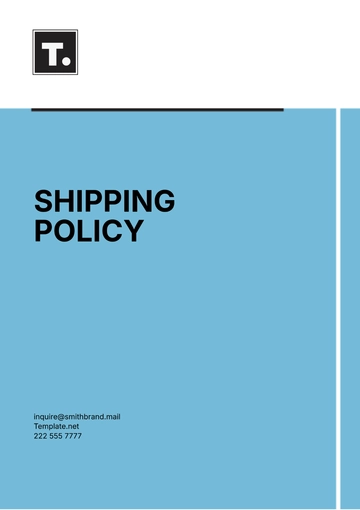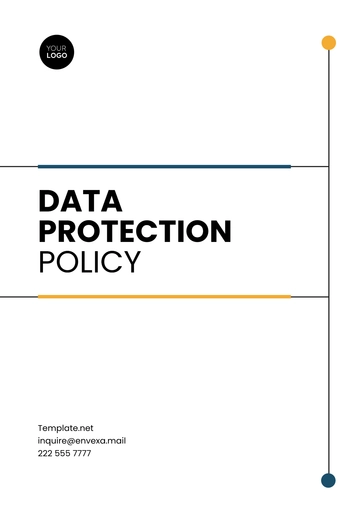Free Social Media Compliance Advertising Policy

1. General Advertising Principles
1.1. Compliance with Laws and Regulations
All social media advertising campaigns must adhere to applicable local, national, and international laws and regulations. This includes compliance with consumer protection laws, advertising standards set by relevant authorities, and respecting intellectual property rights.
Example:
Ensure that advertisements do not make false claims or engage in deceptive practices, as per the guidelines set by the Federal Trade Commission (FTC).
1.2. Ethical Considerations
Our organization is committed to ethical advertising practices. Advertisements must not contain content that is misleading, deceptive, offensive, discriminatory, or harmful to any individual or group.
Example:
Avoid using fear tactics or sensationalism in advertisements that could exploit users' emotions.
2. Ad Content and Creative Requirements
2.1. Brand Consistency
Ad creatives should maintain consistency with our brand guidelines. This includes adhering to prescribed logo usage, color schemes, and maintaining the overall tone and style of our brand's messaging.
Example:
Ensure that all ad creatives feature our updated logo and follow the color scheme outlined in our brand style guide.
2.2. Accuracy and Clarity
All claims made in advertisements must be accurate, clear, and substantiated with evidence where necessary. Any disclaimers or fine print should be legible and readily accessible to users.
Example:
If an advertisement claims "20% off," provide clear information on the terms and conditions, including any limitations or restrictions.
2.3. Avoidance of Sensationalism
Advertisements should avoid using exaggerated or sensational language that may manipulate users' emotions or perceptions unrealistically.
Example:
Instead of stating "Miraculous Results Guaranteed," use language like "Effective Results Based on Real User Feedback.”
3. Targeting and Audience Segmentation
3.1. Audience Selection
Audience targeting should be strategic, based on demographics, interests, and behaviors. This ensures that advertisements are relevant to the intended audience while respecting user privacy.
Example:
Target ads for a new fitness app to users aged 18-45 interested in health and wellness.
3.2. Exclusion Lists
Maintain exclusion lists to prevent advertisements from reaching inappropriate or sensitive audiences. These lists may include individuals who have opted out of seeing certain types of content.
Example:
Exclude users who have expressed a desire not to see content related to alcohol if promoting a liquor brand.
4. Data Privacy and Consent
4.1. Data Handling
Ensure that any user data collected through social media advertising is handled in full compliance with data protection laws. Obtain explicit consent when necessary and clearly communicate how user data will be used.
Example:
Provide a link to a privacy policy that explains how user data is collected, used, and protected.
4.2. Cookie Usage
Comply with cookie consent regulations, and offer users clear options to manage their cookie preferences, including opting out if they choose.
Example:
Display a cookie banner upon a user's first visit to our website, allowing them to accept or decline cookies.
5. Ad Transparency and Disclosure
5.1. Ad Labeling
All advertisements must be clearly labeled to distinguish them from organic content. Use platform-approved labels such as "Sponsored," "Promoted," or "Ad."
Example:
Place the "Sponsored" label prominently above the ad content to ensure users recognize it as paid advertising.
5.2. Material Connections
If there are any material relationships or sponsorships between our organization and individuals or entities mentioned in the advertisement, disclose these relationships in compliance with relevant regulations.
Example:
If a social media influencer is promoting our product, clearly disclose the partnership in the ad caption or description.
6. Monitoring and Reporting
6.1. Continuous Monitoring
Regularly monitor the performance and content of ad campaigns to ensure compliance with this Policy and make necessary adjustments to improve campaign effectiveness and compliance.
Example:
Conduct weekly reviews of ad campaigns to ensure ad content and targeting remain in compliance.
6.2. Reporting Violations
Employees involved in social media advertising campaigns should promptly report any violations or concerns related to this Policy to the designated compliance officer or team.
Example:
Use an internal reporting system to notify compliance officers of potential policy violations or issues with ad campaigns.
7. Enforcement
7.1. Consequences of Non-Compliance
Failure to comply with this Policy may result in corrective actions, including but not limited to the suspension or termination of social media advertising privileges for individuals or teams responsible for non-compliant campaigns.
Example:
If an employee repeatedly violates this Policy, their access to social media advertising tools may be temporarily revoked.
7.2. Training and Education
All employees involved in social media advertising campaigns must receive training on this Policy and stay informed about updates to ensure continued compliance.
Example:
Conduct quarterly training sessions for the marketing team to educate them about changes in social media advertising regulations and best practices.
8. Policy Review and Updates
This Policy will be reviewed annually or as needed to ensure it remains current with changing laws and industry standards. Any updates to the Policy will be communicated to all relevant stakeholders.
Policy Owner: | [Company Name] |
Policy Effective Date: | [January 1, 2050] |
Policy Review Date: | [January 1, 2051] |
Last Updated: | [January 1, 2050] |
Version: | [1.1.1] |
Please note that this is a detailed and expanded fictional Social Media Compliance Advertising Policy document. In a real-world setting, it's essential to consult with legal and compliance experts to create a tailored policy that meets the specific needs and regulatory requirements of your organization.
9. Ad Spend and Budget Allocation
9.1. Budget Accountability
Clearly define responsibilities for managing the advertising budget, including approval processes and spending limits. Ensure that advertising expenses align with the overall marketing strategy.
Example:
The marketing manager is responsible for overseeing and approving all ad campaign budgets, while individual campaign managers are responsible for adhering to allocated budgets.
9.2. Monitoring Return on Investment (ROI)
Regularly assess the ROI of social media advertising campaigns to evaluate their effectiveness. Adjust budgets and allocation based on performance data and campaign objectives.
Example:
If a campaign is not meeting its ROI goals, consider reallocating budget to more successful campaigns or adjusting targeting strategies.
10. Crisis Management and Response
10.1. Crisis Preparedness
Establish a clear plan for handling potential crises related to social media advertising. Identify potential issues and outline communication protocols and responsibilities for responding to public concerns or backlash.
Example:
In the event of an ad campaign controversy, designate a crisis management team responsible for crafting a timely and appropriate response.
10.2. Transparency in Crisis Communication
During a crisis, maintain transparency and provide timely updates to affected parties and the public. Address concerns and complaints professionally and empathetically.
Example:
If a data breach occurs, communicate the issue, steps taken to address it, and how affected users are being supported through official channels.
11. Competitive Analysis and Benchmarking
11.1. Competitive Landscape
Regularly analyze the social media advertising strategies of competitors to identify trends, strengths, and weaknesses. Use this information to refine our own strategies and stay competitive.
Example:
Conduct monthly competitive analysis reports that evaluate the performance of competitors' social media ads and compare them to our own.
11.2. Benchmarking
Establish key performance indicators (KPIs) and benchmarks for our social media advertising campaigns. Continuously measure and compare our performance against these benchmarks to gauge success and areas for improvement.
Example:
Set benchmarks for click-through rates (CTR) and conversion rates based on industry standards and strive to meet or exceed them.
12. Ad Campaign Documentation and Archiving
12.1. Record-Keeping
Maintain comprehensive records of all social media advertising campaigns, including ad creatives, targeting parameters, and performance metrics. Keep records for a minimum period as required by applicable laws and regulations.
Example:
Store records of all ad campaigns, including ad copies and audience data, for a minimum of two years to comply with data retention regulations.
12.2. Archiving Procedure
Establish a clear archiving procedure to ensure easy retrieval of historical campaign data for auditing purposes or retrospective analysis.
Example:
Create a digital archive organized by campaign date and type, making it simple to access campaign details when needed.
- 100% Customizable, free editor
- Access 1 Million+ Templates, photo’s & graphics
- Download or share as a template
- Click and replace photos, graphics, text, backgrounds
- Resize, crop, AI write & more
- Access advanced editor
Introducing Template.net's Social Media Compliance Advertising Policy Template, your key to ensuring regulatory adherence in digital marketing. This editable and customizable template streamlines policy creation. With seamless editing in our Ai Editor Tool, tailor guidelines effortlessly. Stay compliant and secure with this essential tool for responsible social media advertising.
You may also like
- HR Policy
- Restaurant Policy
- Company Policy
- Accounting Policies and Procedures
- Website Policy
- Privacy Policy
- Safety Policy
- School Policy
- IT and Software Policy
- Law Firm Policy
- Construction Policy
- Interior Design Policy
- Travel Agency Policy
- Education Academic Policy
- Security Policy
- Real Estate Policy
- Expense Policy
- Software Policy





























